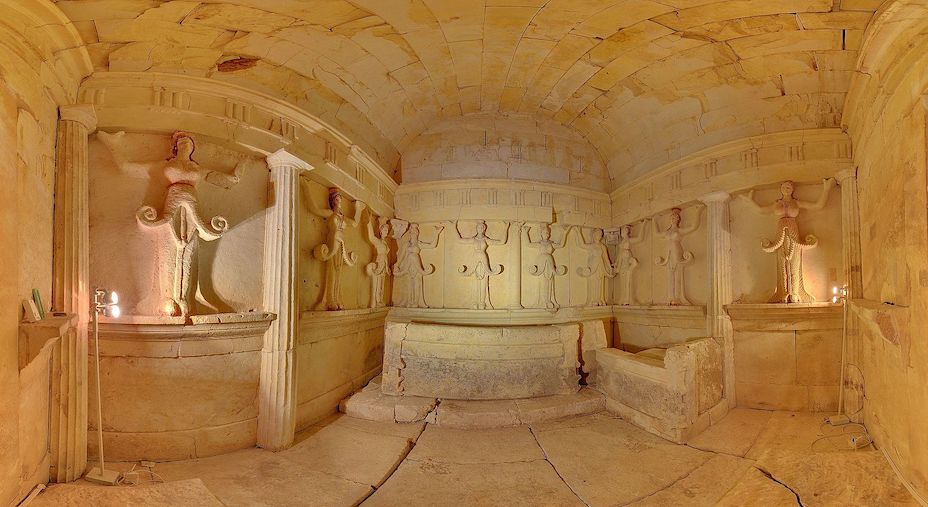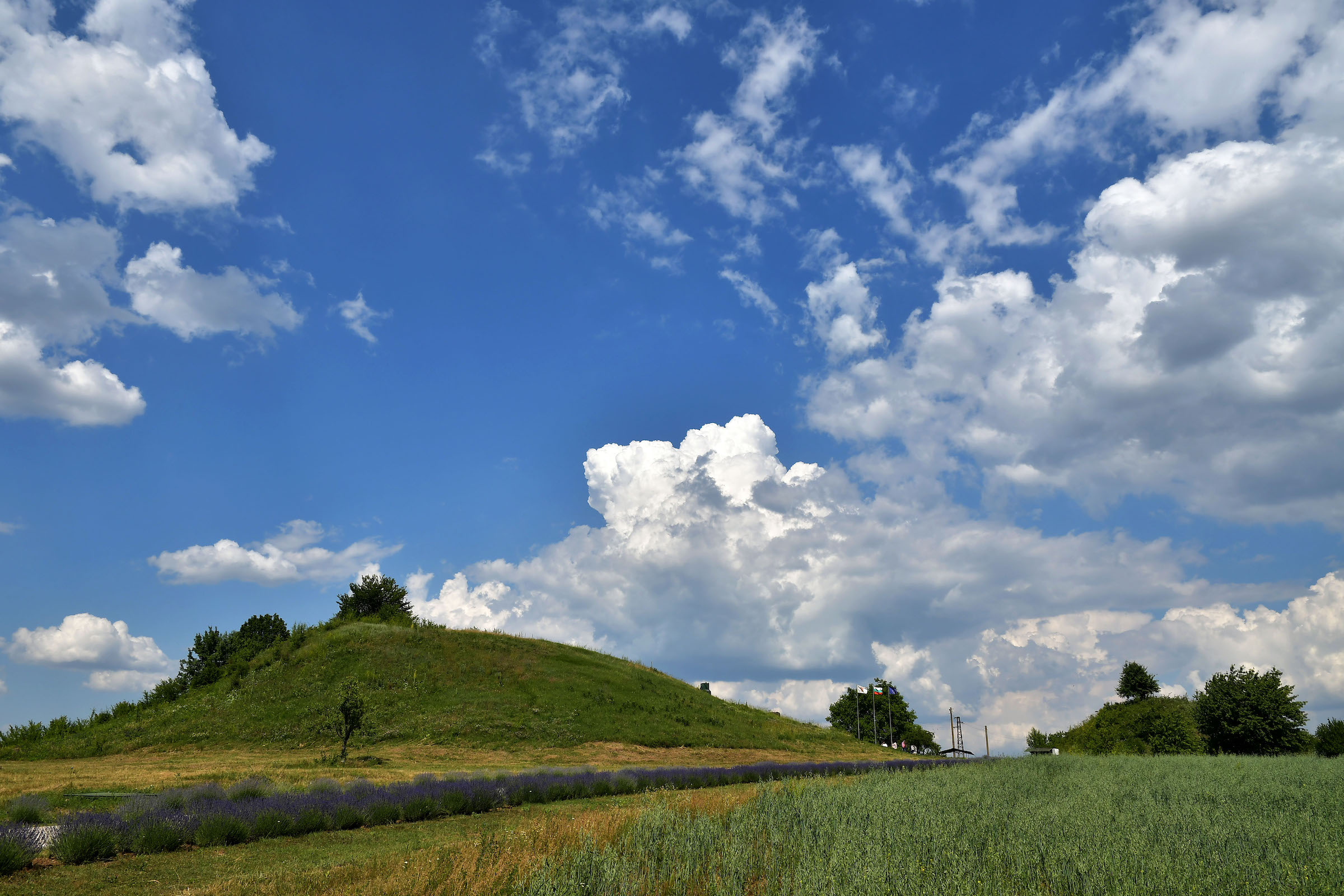 There is nothing quite like it for hundreds of miles around.
There is nothing quite like it for hundreds of miles around.
Its unusual architecture made it world-famous as soon as it was discovered by archaeologists in 1982. Ever since, the Thracian Tomb of Sveshtari has been the subject of extensive study and speculation.
The tomb is located near the village of Sveshtari, between the cities of Razgrad and Silistra, in northeast Bulgaria. If the experts are right, the tomb was built in the third century BC to house the remains of none other than Dromichaetes, a powerful Thracian king who defeated Alexander the Great’s successor, Lysimachus, in a battle and ended up marrying the latter’s daughter. The unfinished decorations inside the tomb also tell us that its occupant must have died suddenly.
The Thracians were ancient inhabitants of what is now the Balkan peninsula. They left no written documents, so everything we know about their lives and customs comes from excavations of their sanctuaries and from what their contemporaries wrote about them.
There were many Thracian tribes, and these were often at war with their Macedonian and Greek neighbors. Yet, there was also cultural exchange between them. That Dromichaetes’s tribe, the Getae, had other than warring relations with ancient Greece is evidenced by the presence of ten female-shaped columns adorning the burial chamber of the Sveshtari tomb; these were typical of Hellenic architecture. Interestingly, the beautiful half-female, half-plant figures as well as the exquisite decorations in the tomb’s vault are the only ones of their kind found in a Thracian necropolis.
More typically Thracian elements of the Sveshtari tomb are that it was built in a mound and that its occupant was buried with his wife and horses.
Experts also believe that Helis, the lost capital of the Getae, was located in the area, as a large number of Thracian sanctuaries and the remains of a fortified city were found in the vicinity of Sveshtari.
Because of its uncommon, rich decorations and because it provides a wealth of information about the culture of the Getae, the Sveshtari tomb became a UNESCO World Heritage Site in 1985. It is one of only two Thracian tombs in Bulgaria to have received UNESCO protection to date, the other being the Thracian Tomb of Kazanlak.

Bulgaria is known for its Thracian mound tombs; it is estimated that there are up to 60,000 Thracian mounds across the country, most of them yet to be explored. Yet, many of them are not publicly accessible, and some of the ones that are, like the Kazanlak and the Alexandrovo tombs, are replicas. (The Kazanlak and Alexandrovo tombs were plundered by treasure hunters, and many artifacts inside them were damaged, so the replicas were built for the tombs’ protection.)
The Sveshtari tomb, however, is the real deal. Because it was never looted and because it was discovered relatively recently, it has been wonderfully preserved, down to the female figures’ colored garments and the exquisitely painted murals. So far, only minimal conservation work has been done on the site.
However, two-and-a-half-millennia-old architecture requires restoration and enhancements for long-term conservation and continued public access. So, in October 2018, US Ambassador to Bulgaria Eric Rubin announced that the US Ambassadors Fund for Cultural Preservation would donate $184,000 for the tomb’s conservation as well as for display and infrastructure upgrades at the site. The restoration project will be overseen by Bulgaria’s Credo Bonum Foundation.
The US Embassy’s investment in Bulgarian cultural heritage exceeds one million US dollars and has helped preserve important historic buildings such as St. John Aliturgetos Church in Nessebar; two fourth-century Christian tombs in Sofia; the fourth-century BC Thracian tomb of Kran II near Kazanlak; the 17th-century Kurshum Mosque in Silistra; third-century mosaic floors in Plovdiv; and the early-19th-century library and mosque of Osman Pazvantoglu in Vidin.
While you are in the vicinity of Sveshtari…
The Thracian Tomb of Sveshtari is part of the Sboryanovo Historical and Archaeological Reserve, featuring more than 140 archaeological sites from different eras. Be sure to visit the Thracian sanctuary at Kamen Rid, dating from the first century BC, and the remains of a fortified Thracian city, believed to be Helis, the capital of the Getae.
Visitors can also explore Demir Baba Teke, the rumored resting place of sixteenth-century Muslim mystic and healer Demir Baba. The cult complex (teke) was built on top of a two-thousand-year-old Thracian holy site (of which only the stone altar remains), and the water from the teke’s spring is believed to have healing powers.
Head southwest and visit the Abritus National Archaeological Reserve, in Razgrad, which houses ruins from the ancient Roman city of Abritus. The city of Abritus was the site of a famous battle in 251 AD between the Romans and the invading Goths (who plundered Philippopolis, modern Plovdiv, the year before), which ended with the killing of the Roman emperor Trajan Decius.
Photo credit: Interact-Bulgaria, Wikimedia Commons
Read more about the Sveshtari tomb in this feature by Vagabond magazine.

